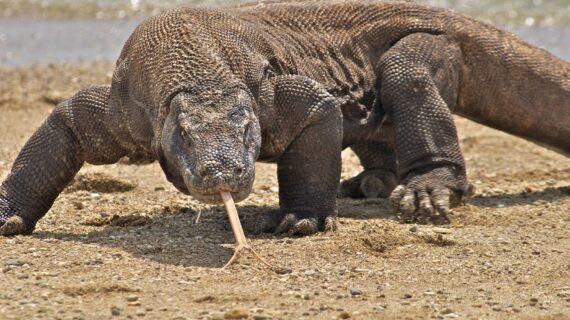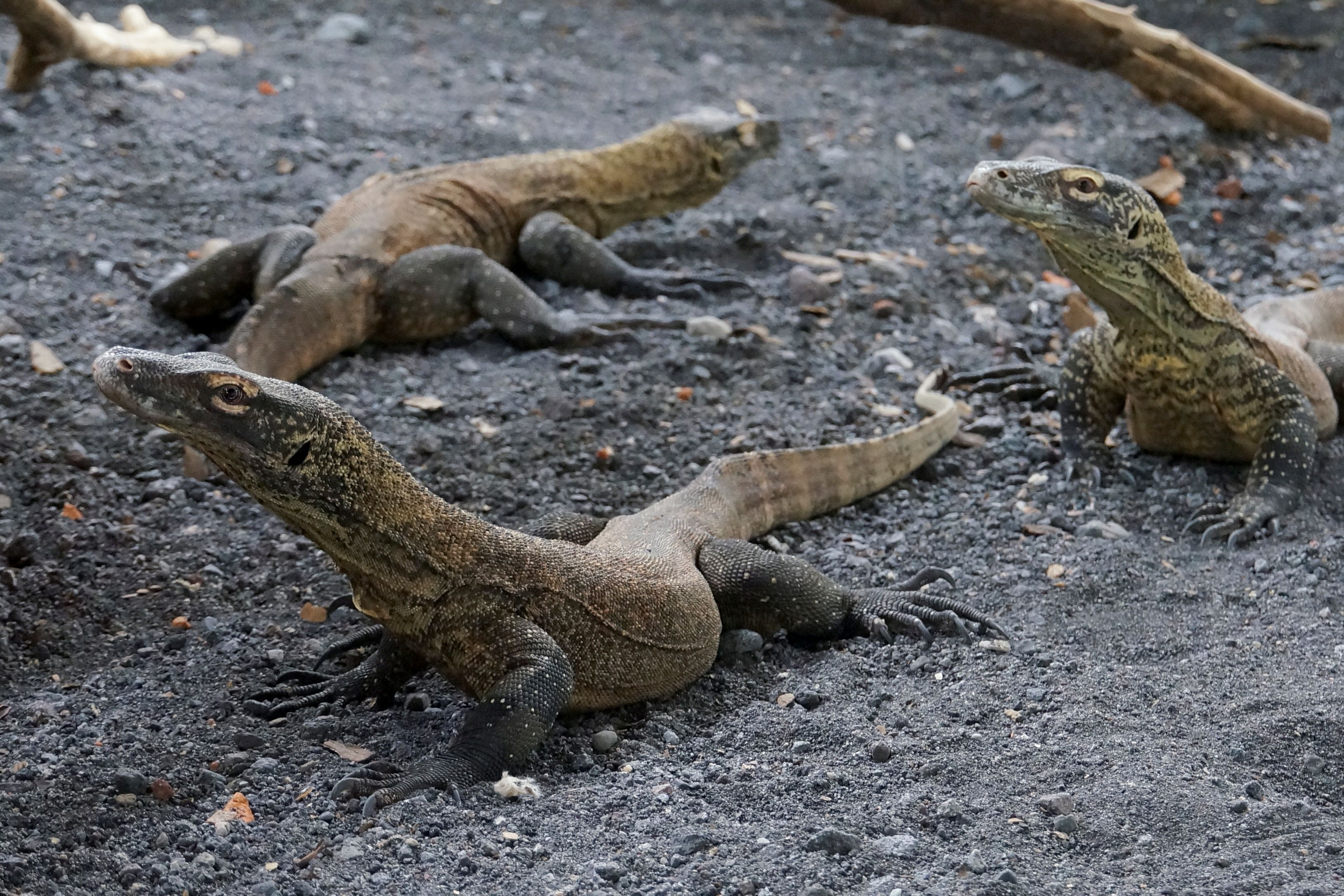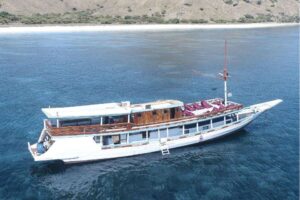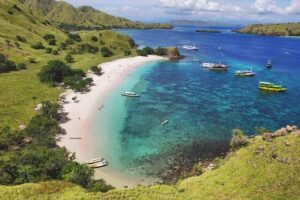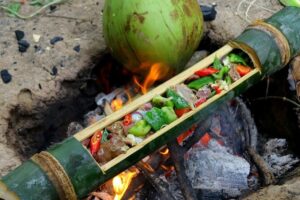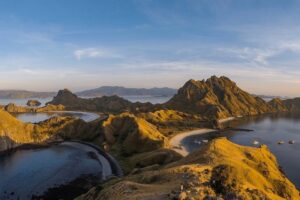The conservation of the Komodo dragon, the world’s largest lizard, has become a critical focus for environmentalists, scientists, and local communities across Indonesia. Recent efforts to reintroduce six captive-bred Komodo dragons into their natural habitat highlight the ongoing commitment to preserving this iconic species. However, these initiatives face significant challenges, including habitat destruction, climate change, and illegal wildlife trade.
Reintroduction of Komodo Dragons: A Step Toward Conservation
On September 23, 2023, six Komodo dragons, known locally as “ora,” were released into their natural habitat at Wae Wuul Nature Reserve in Labuan Bajo, West Nusa Tenggara (NTT). These dragons, hatched in 2020 at Cisarua Safari Park in Bogor, Jawa Barat, had undergone a 40-day acclimatization period in a designated enclosure within the reserve. The process involved minimizing human contact and maintaining an environment that closely resembled their natural habitat.
According to Arief Mahmud, head of the NTT Regional Natural Resources Conservation Agency (BBKSA), the acclimatization was crucial to ensure the dragons could adapt and survive in the wild. The release marked a significant milestone in the ex-situ to in-situ conservation program, which aims to bridge the gap between captive breeding and wild populations.
The dragons will be monitored for the next three years using GPS telemetry and camera traps installed throughout the reserve. This monitoring is essential for tracking their movements, health, and survival rates. Indra Eploitasia, director of the Directorate of Biodiversity Conservation, emphasized that the selection of Wae Wuul as a release site was based on genetic studies, habitat suitability, and food availability.
Threats to Komodo Dragons: Habitat Loss and Climate Change
Despite these conservation efforts, Komodo dragons continue to face severe threats. One of the most pressing issues is habitat destruction. In November 2021, a fire broke out in Loh Serai, a core area of the Komodo National Park. The fire, which lasted over six hours, affected approximately 10 hectares of land and raised concerns about the safety of the Komodo population.
Arief Mahmud, head of the Komodo National Park, stated that while the exact cause of the fire remains unclear, it is suspected to have been triggered by dry weather and possibly lightning strikes. The incident highlighted the vulnerability of Komodo habitats to natural disasters and the need for better fire prevention and management strategies.
Climate change further exacerbates these challenges. A 2020 study published in Ecology and Evolution warned that rising temperatures and decreasing rainfall could lead to the extinction of Komodo dragons by 2050. The research, led by Alice R. Jones from the University of Adelaide, modeled the impact of climate change on Komodo habitats, emphasizing the risk of prolonged dry seasons and reduced soil moisture.
The study also pointed to the threat posed by rising sea levels, which could flood low-lying areas where Komodo dragons are concentrated. This would not only destroy their habitat but also disrupt their food sources and breeding grounds.
Illegal Wildlife Trade: A Persistent Challenge
Another major threat to Komodo dragons is the illegal wildlife trade. In April 2019, Indonesian authorities intercepted a shipment of six Komodo dragons that were being smuggled out of the country. The animals, found in a transit facility in Sidoarjo, Jawa Timur, were later identified as originating from the mainland of Flores rather than the Komodo National Park.
The case led to the arrest of several individuals involved in the trade, including those who used joint bank accounts to facilitate transactions. The Department of Environment and Forestry (KLHK) emphasized the importance of DNA testing to trace the origin of the animals and ensure their proper reintroduction.
To combat such crimes, law enforcement agencies have increased cyber patrols to monitor social media platforms for illegal wildlife sales. Adi Karya Tobing, head of the Special Criminal Investigation Division, noted that the use of joint bank accounts and online marketplaces has made it easier for traffickers to operate undetected.
Community Involvement and Sustainable Tourism
Local communities play a vital role in the conservation of Komodo dragons. In areas outside the Komodo National Park, such as Wae Wuul Nature Reserve, community-based ecotourism initiatives have been developed to promote sustainable practices. These programs involve local residents in conservation efforts and provide alternative livelihoods that reduce reliance on harmful activities like poaching.
In addition, the government has partnered with local governments to strengthen protection measures. For example, in the Pota Forest Protection Area and Longos Island, community participation in monitoring and protecting Komodo dragons has been encouraged through awareness campaigns and the establishment of village regulations.
The Need for Policy Reforms
Despite these efforts, experts argue that stronger legal frameworks are needed to protect Komodo dragons. Adi Karya Tobing called for the revision of the 1990 Environmental Conservation Law to make it easier to prosecute wildlife traffickers, particularly those operating online. Current penalties, which include a maximum of five years in prison and a fine of up to 100 million rupiah, are seen as insufficient to deter criminals.
Wiratno, director of the Directorate of Biodiversity Conservation, acknowledged the need for policy reforms but emphasized that existing laws remain relevant. He suggested that collaboration between government agencies, local communities, and international organizations is key to ensuring the long-term survival of Komodo dragons.
As the global community continues to grapple with biodiversity loss, the conservation of Komodo dragons serves as a critical case study. From reintroduction programs to combating illegal trade and addressing climate change, the challenges are complex, but the commitment to protecting these ancient creatures remains unwavering.

